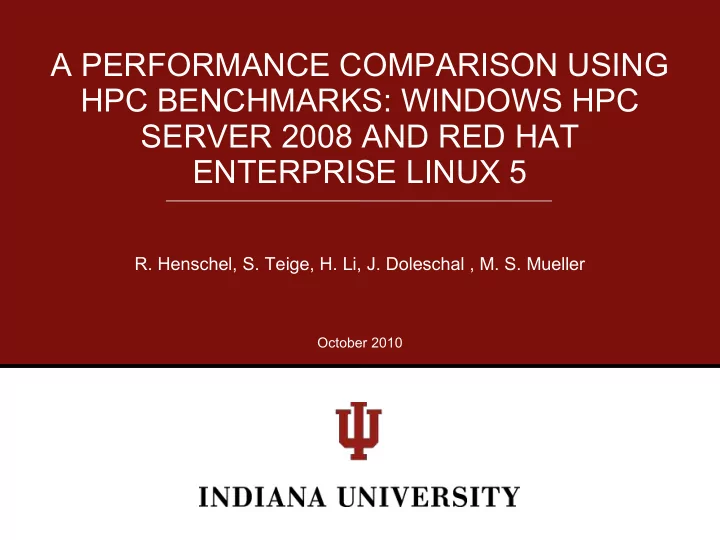High-Performance Computing (HPC) represents a paradigm where computational power is leveraged to solve complex scientific and engineering problems that are beyond the capabilities of conventional computing systems. This robust domain encompasses a multitude of technologies, architectures, and methodologies, facilitating the performance of intricate calculations, vast data analysis, and the simulation of multifaceted physical systems. To fully appreciate HPC, it is imperative to explore its defining characteristics, advantages, and the relationship it bears to multicore personal computers (PCs).
At its core, HPC is characterized by the utilization of supercomputers or clusters of computers to perform high-speed calculations. The architecture of such systems is deliberately designed to extract substantial performance through parallel processing. In this context, “parallel processing” refers to the capability of executing multiple calculations simultaneouly, thereby enhancing computational efficiency and reducing time-to-solution. This feature distinguishes HPC from traditional computing paradigms, where sequential processing predominates.
Historically, the development of HPC has been pivotal in numerous breakthroughs across diverse fields such as climate modeling, molecular dynamics, financial simulations, particle physics, and bioinformatics. The level of computational intensity required for these applications necessitates the extraordinary capabilities offered by HPC. These systems are typically equipped with hundreds or even thousands of processors working in conjunction, forming a cohesive unit dedicated to solving problems that require immense computational resources.
The underlying architecture of HPC systems varies, but they predominantly rely on processing units known as Central Processing Units (CPUs) and increasingly, Graphics Processing Units (GPUs). GPUs, originally developed for rendering graphics, have found application in HPC due to their ability to handle large volumes of parallel tasks efficiently. The synergy between CPUs and GPUs allows for the optimization of computational workflows, particularly in areas such as machine learning and data analysis.
Multicore personal computers, conversely, are designed to cater to general consumer needs, incorporating multiple processing cores within a single CPU chip. Although multicore PCs share similarities with HPC in terms of parallel processing capabilities, they fundamentally differ in scale, architecture, and intended use. A multicore PC typically comprises two to sixteen cores, facilitating increased performance for everyday applications such as web browsing, productivity tasks, and gaming. While they do incorporate parallel processing, the level of computational power and resource allocation in multicore PCs is vastly inferior to that of dedicated HPC systems.
The fascination with HPC stems from not just its raw power, but also its capacity to model and simulate phenomena that bear significant implications for our understanding of the universe. For instance, HPC has enabled scientists to simulate climate change scenarios, predict natural disasters, and unravel complex biological processes at a molecular level. The ability to analyze vast datasets in real-time and derive actionable insights can transform entire fields, exemplifying the revolutionary potential of such technologies.
Understanding the intricate relationship between HPC and multicore PCs requires delving into the principles of scalability and efficiency. HPC systems are designed to scale efficiently as additional resources are added. This scalability is pivotal in tackling increasingly sophisticated problems that demand more computing power as research progresses. McGill University and the University of Illinois, for instance, utilize HPC resources to facilitate advanced research projects that require extensive mathematical computations and data processing capabilities.
Conversely, multicore PCs often achieve limited scalability, largely constrained by their hardware architecture and the demands of standard software applications. As tasks become resource-intensive, multicore systems may suffer from bottlenecks or performance limitations that are ameliorated through the more extensive architectures of HPC. The difference in scalability is further emphasized when comparing the methods of task distribution and load balancing in both computing environments.
Moreover, another distinguishing factor is the software ecosystem surrounding HPC and multicore PCs. HPC systems often operate under specialized operating systems capable of managing numerous complex jobs simultaneously while optimizing performance through advanced scheduling algorithms. Frameworks such as MPI (Message Passing Interface) and OpenMP (Open Multi-Processing) are quintessential to HPC, enabling efficient coordination among distributed resources by managing communication and workloads effectively.
It is fascinating to note that many of the computational methods and algorithms developed for HPC eventually trickle down to benefit multicore PCs and vice versa. The evolution of programming languages, compilers, and optimization techniques in HPC has paved the way for improved task management and resource allocation in consumer-grade hardware. As demands for processing power continue to grow in various sectors, including artificial intelligence and big data analytics, the boundaries between HPC and traditional computing systems might continue to blur, prompting further innovations within both domains.
In conclusion, while HPC and multicore PCs share foundational concepts of parallel processing, their scales, architectures, and applications are profoundly distinct. HPC transcends the typical computing paradigm to address some of the most pressing scientific inquiries of our time, rendering it indispensable to contemporary research and industry. On the other hand, multicore PCs serve a critical role in everyday computing, delivering sufficient performance to cater to consumer needs without the overhead and complexity inherent to HPC. As technology continues to evolve, the intersection of these realms may yield transformative advancements that deepen our understanding of the natural world and elevate human performance in myriad fields.












